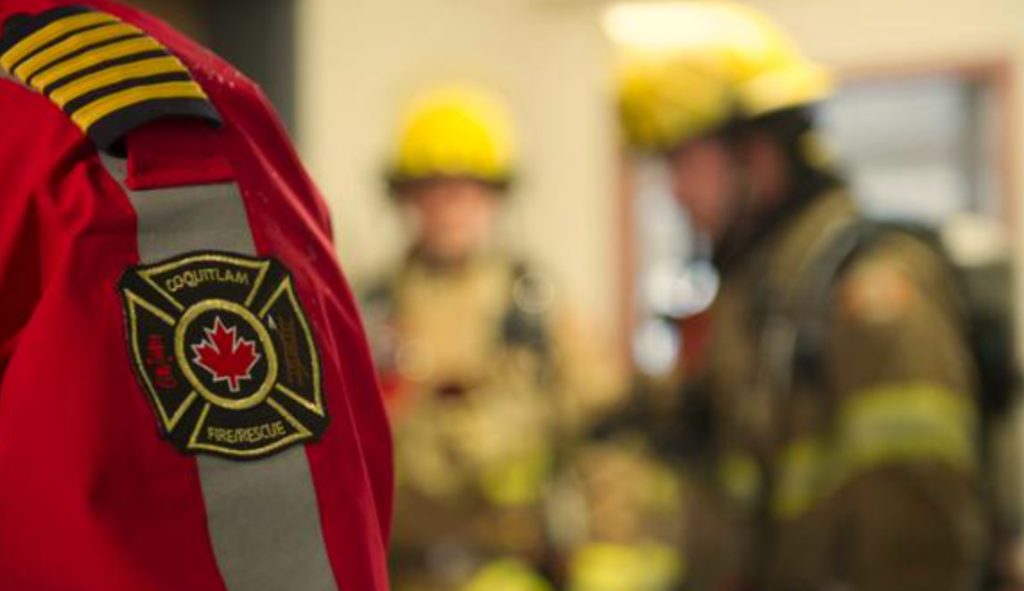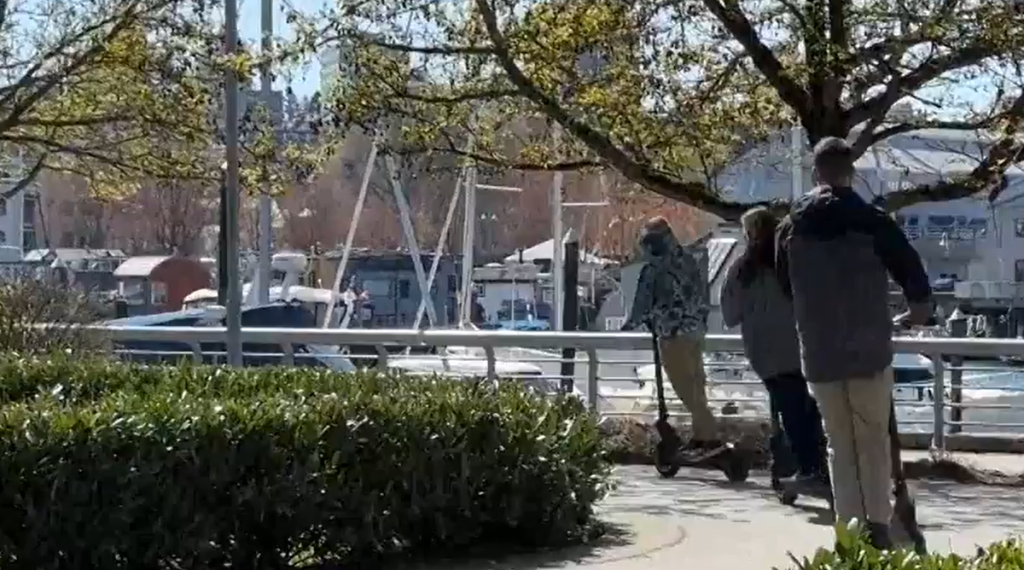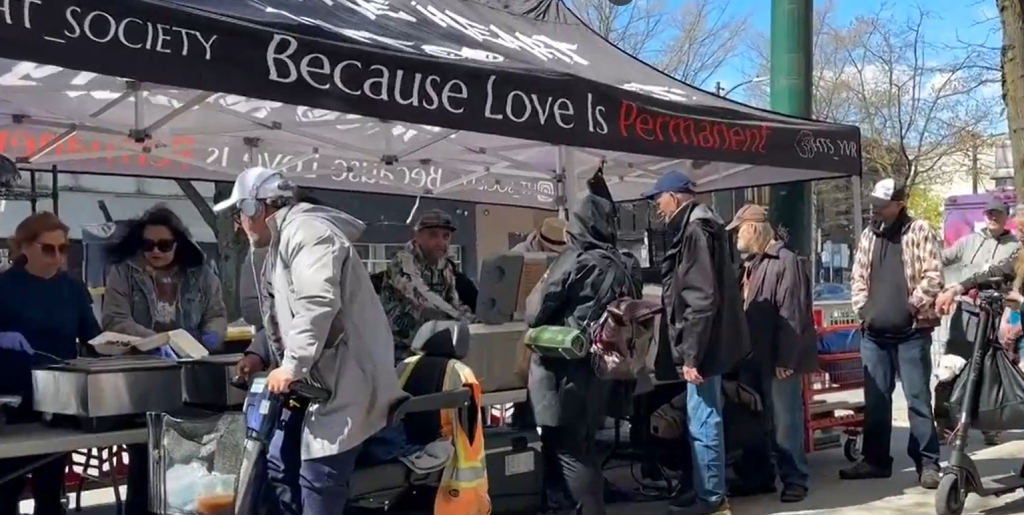Supporting, but not supported: Challenges B.C. opioid crisis frontline workers face
Posted June 11, 2021 12:04 pm.
VANCOUVER (NEWS 1130) – Ronnie Grigg is not a drug user, but the opioid crisis has affected him in ways we don’t always hear about.
Burnt out. Exhausted. Torn from constant losses. As a frontline worker on Vancouver’s Downtown Eastside, Grigg works non-stop to support and save countless lives from overdoses.
His personal impact on the opioid crisis is in the thousands. In 12 years, he says he has reversed hundreds of overdoses and trained hundreds more on reversal procedures.
While the number of overdose deaths are shared month after month, the thousands of lives saved and still affected by the opioid crisis are not shared.
Related articles:
-
Overlooked, under-analysed: Overdose reversals saving hundreds in B.C.’s opioid crisis
-
Naloxone a ‘band-aid’ response to B.C.’s toxic drug death crisis: advocates
Despite the estimated 1,000 to 2,000 overdose reversals happening in B.C. every month, these figures aren’t often publicized.
Though essential data about community overdoses and alternative overdose reversals are lacking, overdose reversal figures reveal much more than what’s presented at face value. It goes behind the curtain of the opioid crisis to further show the struggles faced by drug users and frontline workers.
According to Grigg, what’s more important is to illustrate the response and support taken on by so many frontline workers.
“This data is a number, but that represents loved ones for many people … But often what’s missed is how great the response is. The invisibilization of that response is not addressed enough,” he said.
Grigg hopes to address and resolve the lack of support and recognition of frontline workers with his non-profit organization, Zero Block Society.
Key takeaways: culture saves lives, we need brave politicians to take risks and concrete steps, “answers are on the ground”, “you either believe in equity or you don’t”, front line workers are often not valued for the life saving work they do and “we need action not action plans” pic.twitter.com/neG44vp5zv
— erin arnold (she/her) (@erinarnolddream) September 13, 2018
The majority of recorded overdose reversals are done by first responders or happen at overdose prevention sites (OPS) by support and lived experience workers.
Very few community overdose reversals are recorded and are typically carried out by off-hours frontline workers, according to Grigg.
The response taken on the frontlines isn’t restricted to overdose reversals. A lot of other work happens behind the scenes.
“There is a lot of education, compassion, and connection too. I discovered in training and working that these are the responses necessary to stabilize a life. It’s a lot of connecting and supporting, and encouraging people to take a step toward stabilization of their life,” Grigg said.
Working in harm reduction and Healthcare education, I have heard so many times how much people care, while I continue seeing the opposite! Don't fucking tell me, Show me, I have heard enough!!
— Gerald Peachey 'SPIKE' (@spikesarts) October 22, 2020
First responders can get support for their well-being through organizational frameworks and policies. But those working at OPS or as peer workers don’t get the same care.
“This is their day-to-day, they’re saving people every day and they get paid very little,” said Brittany Graham, program coordinator at the Vancouver Area Network of Drug Users (VANDU) OPS.
“Countless people have died of overdoses in the last five years. And we, as a society, kind of give no f****s about it.”
Site employees often have a hard time accessing things like long-term employment, sick leave, or therapy. Some workers also feel stigma around opioid harm reduction work further undermines their efforts.
Jade Boyd, a research scientist at the BC Centre for Substance Use (BCCSU), has witnessed many overdoses and spoken with frontline workers about their experiences.
“It’s an extreme event, and it’s not just the trauma of dealing with someone who could potentially pass away because the onus is on you. It’s a lot of pressure and it takes a large emotional toll,” she said.
Coming together in times of crisis and loss
The compassion and connections fostered by frontline workers at OPS sites on the Downtown Eastside have created tight-knit communities of support.
Gilliana Soto, a recovering user and program manager of Atira’s SisterSquare and SisterSpace — two women-only OPS, believes this sense of community is an essential aspect to the work done at her site.
“I’ve been told by many of the women here that this community is kind of like a dysfunctional family, where women can be unafraid to be themselves,” she said.
This bond is especially important, as women continue to look out for each other outside of the bounds of the site.
“It’s like a communal hub to come in, socialize, and meet with friends and family. Also they check in with us. If we haven’t seen somebody in a couple days, we’ll be like, ‘Hey, have you seen so-and-so?’ And everybody’s ears to the ground in case something’s happened or someone’s missing,” said Soto.
"Words can kill people, through shame and through stigma. How we describe the opioid crisis matters." – Dr. Bonnie Henry, Provincial Health Officer#CPRSproud pic.twitter.com/zhED0jROlr
— Adrian Crook (@adriancrook) February 28, 2018
But work done at overdose prevention sites becomes complicated when close relationships are formed, making overdoses and deaths especially difficult to overcome.
“We’re only hearing about the deaths, which are incredibly important, but we’re not hearing about the immense labour that people are putting in. Not only are they dealing with reversing overdoses all the time in their community, but they’re also dealing with the loss of losing loved ones all the time,” said Boyd.
For Soto, while she has been able to stay away from drug use, many of her close friends and connections are still entrapped within the opioid crisis.
At times, the constant loss of lives is unbearable.
“Honestly, I have lost almost all of my best friends. Most recent one was in August. And that one is it hurts me every single day. If I had been with him, I could have done something because I’m trained.”
COVID-19 and an already-broken system of support
With the COVID-19 pandemic taking public health priority in B.C., access to resources are limited for the time being.
“It’s scary, because a lot of the resources have been taken away, or reduced hours, or only a certain amount of people can go in. So people are using in the alleys, they’re using alone in [single room occupancy housing] because they cannot have visitors. It’s just a very dangerous time right now as an addict,” said Soto.
Boyd notes the lack of access in the past year, largely because of the COVID-19 pandemic, has led frontline workers to lose connections with former clients and patients.
“I work with a group of people with lived experience from across Canada and they’re all reporting disconnection from the community. Less ability to meet the needs of people who were accessing services previously,” she said.
She says some peer workers have tried to come up with alternative solutions by going to people’s homes and checking in to offer post-overdose support.
But that work can be physically and emotionally challenging, even more so given the stress of the pandemic.
“At the same time, dealing with the social isolation that COVID has caused and the mixed messaging. Because with overdoses you’re saying, ‘Don’t use alone.’ Then with COVID, they’re saying, ‘Don’t see anyone, isolate yourself.’ So it’s been really challenging for people dealing with that and not knowing what to prioritize,” said Boyd.
COVID-19 has exacerbated the symptoms and consequences of addiction: In the first half of 2020, 86% of all opioid overdose deaths in Canada were attributed in British Columbia, Alberta and Ontario, with each seeing an increase in deaths by at least 30% over the year prior.
— ALAViDA Substance Use, a product of LifeSpeak Inc. (@ThinkALAViDA) June 6, 2021
But even before the COVID-19 pandemic, frontline workers have had to turn people away when they seek support.
“The system [in Vancouver’s Downtown Eastside], is not helping or changing anything. When a person wants treatment or wants help or wants something else outside of [the services there], they don’t get it right away,” said Colin Ramsay, a recovered drug user and addictions counselor at Last Door recovery facility.
He tells us the waitlist at Last Door is 12 weeks long for a fully funded bed. The process to get on the list and into that bed is, in his eyes, a complex barrier that often leads to many people changing their minds.
Ramsay believes the current recovery system can’t support the levels the opioid crisis is at and increasing to.
“Try having a phone call with someone when they’re like, ‘I’m gonna die. I can’t stop using, I just overdosed and I’m on methadone. I’m going to use again.’ And you have to say to them, ‘Hey, man, like I’m really sorry to hear that. It’s a tough spot to be in, but you need to talk to access central, and it’s gonna take about 12 weeks.’”
Frontline supporting the frontline
After over a decade of providing hands-on care, Grigg now works in a support position to effect change by advocating and looking out for other frontline workers.
“What I’m trying to achieve is to create sustainability for frontline workers. Because being perpetually in crisis management, as far as public health crises go, I find there’s an inherent unsustainability to the work. So that means there’s a lot of burnout, a lot of trauma exposure, exposure to violence, [and] exposure to suffering. People need to be well supported in that situation,” he said.
Soto says support for workers with lived experience is even more essential.
“It’s a little bit of a grey area, honestly, when it comes to peer support. Because you have to remember that we have our own personal baggage, and then you go to work and every person you interact with has their own trauma, their own baggage that you take on. It’s an emotionally taxing job and you have to have a good system in place to decompress. Try to separate work as much as you can from home,” she said.
Emotional regulation is one of the hardest things to practice after years of pain, trauma & addiction. Today I remind myself people never forget how you made them feel and I strive towards being more gentle, positive and kind. #KindnessMatters #harmreduction
— guyfelicella (@guyfelicella) June 6, 2021
VANDU’s Graham believes reducing the stigma around these sites would better support workers and the work they do.
“I don’t think there’s been a single death related to an overdose prevention site in Vancouver. So they work,” she said.
“But the thing is, it’s still a political issue. The reason why they’re called overdose prevention sites instead of safer consumption sites is because you have to fill out all these intense forms, get it approved at a federal level, and have 26 recommendations filled out based off of the litigation that came with Insite. There’s a lot of politics that comes with drug use and drug policies.”
But for Grigg, storytelling and sharing experiences is the best way to inform about overdose reversals.
“Having the venue to share our narrative is the best way to reduce stigma,” he said.
“Our stories are often backed up by data and research. The stories we share are the only way to create empathy and understanding. So I’m creating safe spaces for those stories to come forward, both the substance user and the frontline worker, and they can often be the same person … That’s really the most humanizing way to reduce and hopefully eliminate stigma. And then what can only follow from that is more compassionate care in our communities.”










